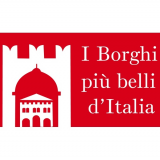
 I borghi più belli d'Italia
I borghi più belli d'Italia
Italian little italies: Giglio Castello, Toscana
- WTI Magazine #90 Apr 14, 2017
-

 I borghi più belli d'Italia
I borghi più belli d'Italia
The name does not derive from the beautiful fragrant flower (lily) but from the Greek word igilio (goat) that in Latin is Gilium. In fact, on this island, as well as on the others of the Tuscany archipelago, many wild goats still exist on Montecristo Island. Giglio Castello, that still preserves the walls that originated its name, was once called “La Terra”.
NARROW STREETS, VIEW OF THE SEA
Sounds of fresh sandals make tourist, that disembark to the scent of the summer, happy. In Giglio Porto, a picturesque place with multicoloured houses, there is the Torre del Saraceno tower, built by Ferdinand II in 1596 and Caletta del Saraceno with nearby remains of an adjoining fish farm of Domizi Enobarbi. In short, if you catch the bus, you will arrive at the medieval village of Giglio Castello, located on the hill, at 400 m. above sea level.
Walking through the castle means to be caressed by wind, attacked by salty air, cross the skyblue colour of narrow streets and alleys. Sweet Tyrrhenian, the Etruscan sea, offers from road outside of the castle a panoramic view to Giannutri, Elba, Montecristo and Corsica islands and a quite large part of the continental coast. Built by the Pisanis in the 12th century, several times enlarged and restored by Dukes of Tuscany, Giglio Castello is well preserved from the inside. Narrow streets towered by arches, external stairs to access houses, large Rocca Aldobrandesca (or Pisana) from the 12th century today closed due to the restoration works and can be observed only from the outside – give to this village the appeal of a defensive castle, especially considering the continuous attacks by the sea. A huge medieval wall, with its three towers and circular plants, protects narrow houses. Three entrance gates to the castle are made of massive pieces of granite. Following the walls, you arrive to the gracious Piazza dei Lombi square, and then to Casamatta, an important defensive location. On the square overlooked by the Rocca, there is a remarkable building built in the 18th century, property of a famous musician.
In the village centre, on the west side, the Church of San Pietro Apostolo denotes the memory of itself , from the 15th century, even if its present appearance, thanks to the recent restorations, makeing it looks like a building from the 18th century. On the right side, in the Cappella del Croce sso chapel, you can admire sacred objects originating from Papa Innocenzo XIII chapel: chalices, candelabras, reliquaries, all made of chiseled silver in Rome between the 17th and 18th century. Silver relics of 1724 are contained in Maniliano’s (the patron saint of the town) forearm. But the real masterpiece is a statue of Christ (in ebony) made by Giambologna. Among paintings and busts from the 18th century there is also an altar from the 15th century. One curiosity: two sabres with silver handle and a gun abandoned by Tunisian pirates during the last siege in 1799. Another particularity worth seeing are the basements of two stoops: they derive from a Roman villa of the Domizi Enobarbis of Giglio Porto (I-II century A.D.). Upon exiting church, under the square, there is a cistern built around year 1800 by Ferdinando III in order to grant an appropriate water reserve, useful in case of siege. In Giglio Campese, finally, Torre Medicea tower, built between the 17th and 18th century is located on a granite oxbow.
LOCAL DISHES
The principal product of Giglio is robust and amber coloured Ansonaco wine. It can be tasted in one of the numerous canteens where it is produced and preserved. Honey and “panficato”, a sweet made of figs and dry fruit, are also appreciated.We suggest wild rabbit “alla cacciatora”, cooked with tomatoes, spices that grow in the thick Mediterranean bushes and a bit of red pepper. The cuisine of the Tuscan’s islands is typically Mediterranean: simple dishes but very palatable based on fish and crustacean, aromatized by the scent of bushes and accompanied by local wine.